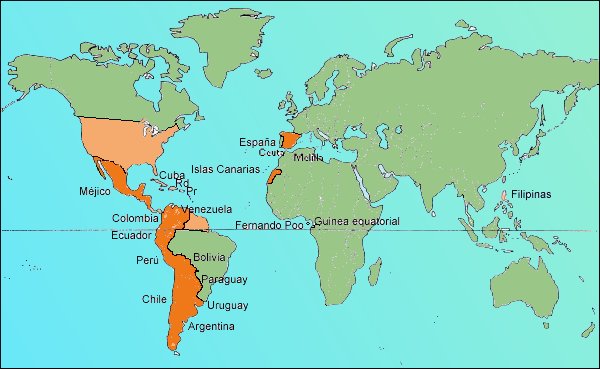Spanish Language and the Place for You
Learning a language and learning its idioms are two very different things. That is why, ultimately, once you have reached certain level of Spanish, the best decision you could make is to enlist on a course to study Spanish abroad and dip into the culture that gives rise to the language. Because, in end effect, Spanish, like any language, is nothing other than the vocalisation of a people's idiosyncrasy.

But, where to go? Spanish is spoken as a first language by somewhere between 350 and 400 million people, spread over more than 20 different countries in the Americas, Europe and Africa (Equatorial Guinea). Needless to say, the Spanish spoken in each of these countries is substantially different from the others, not to mention anything about the cultural distance you will find between any two of these societies.
Which is not to say that these distances cannot be bridged. Certainly from a linguistic perspective, there is a large enough common base to draw so-called 'neutral' resources understandable to the great majority of Spanish speakers in the world. However, beyond the strictly communicative function of language, moving only within 'standard' phrases of common use entails nullifying one of the most attractive aspects of verbal expression: its subtle connotations.
The Right Place at the Right Time
Hence, and in close accordance with you personal preferences, it is important that you choose the right place and that you seek suitable options to study Spanish abroad, in a place that fits with your personality and interests. This way your Spanish will be more than merely a tool to express your basic needs.

Spanish schools in Spain offer a good opportunity to explore an infinitely rich culture that is simultaneously within reach and yet a million miles away. From three hour siestas in the middle of the day, to dining experiences that begin at ten in the evening and can last well into the wee hours of the night, Spain is, quite frankly, different.
And yet, Spanish society partakes largely of the same elements that have shaped western civilization over the past two millennia, going through the same historical circumstances, although digesting them in their own fashion, with the elementary differences derived, for instance, from the coexistence in the peninsula for seven centuries with a more or less potent Arab presence.
The consequences of the historical journey through which Spain has gone are precisely the factors that have determined its specificity within the European context: when other peoples were butchering one another in the most barbarian of styles, Castile underwent a time of splendour in cultural and economic terms. Conversely, when the Renaissance arrived in Italy, Spain was still immersed in the most Gothic of Middle Ages. And so on and so forth.

The implications of this dissonance, also understood within the context of the unexpected discovery of the New World, which propelled Spain onto the center of the world stage and, at the same time, turned it into a feeder —, the goose of the golden eggs, quite literally — of the Austrian empire in its zeal to conquer and dominate the eastern border, provide ample opportunity to explore plenty of themes that make the learning and the understanding of Spanish language a fascinating experience.
Moreover, thinking beyond the circumstances of the past and looking at the actual situation of the present time, the diversity found in the Spanish landscape opens a world of opportunities to explore drastically different traditions, mirrored, as well, in the inflections of the language and the vocabulary used.
In this respect, the difference between attending classes in Granada, studying in Madrid or spending time in Galicia is abysmal, making it seem almost like three different countries. So, whatever you do, remember that your decision will affect not only the way you speak the language but, most likely, the way you look at the world.
